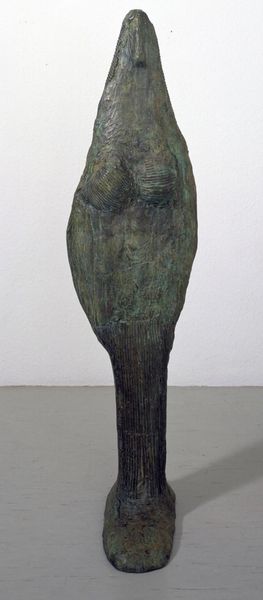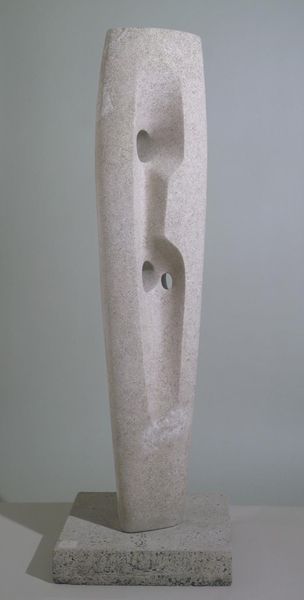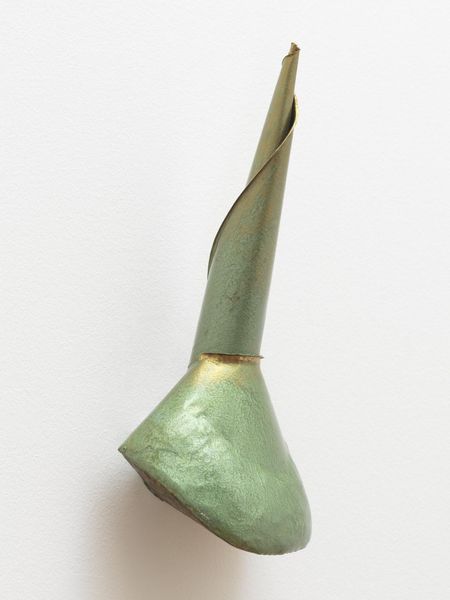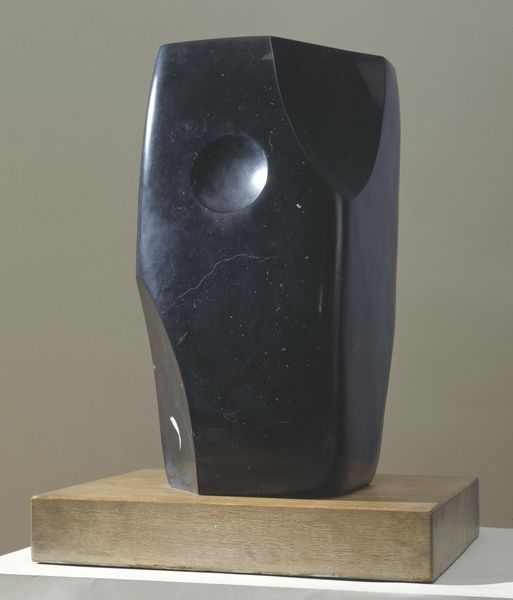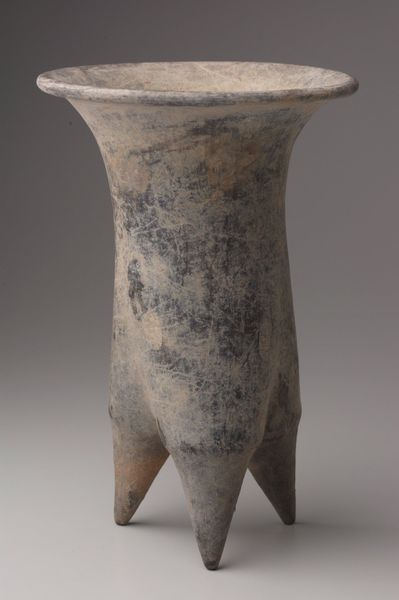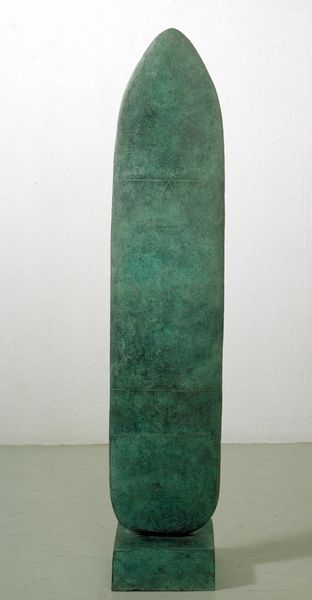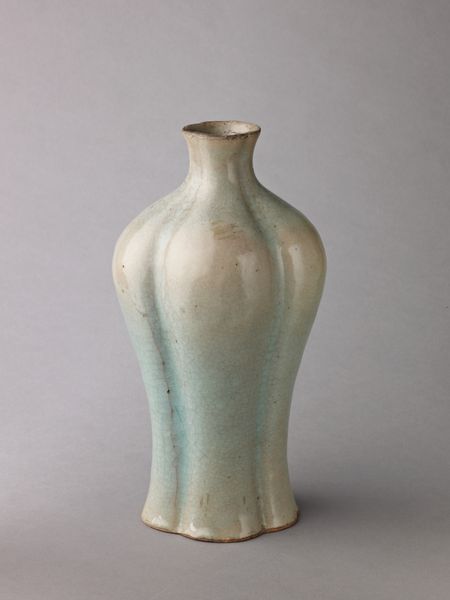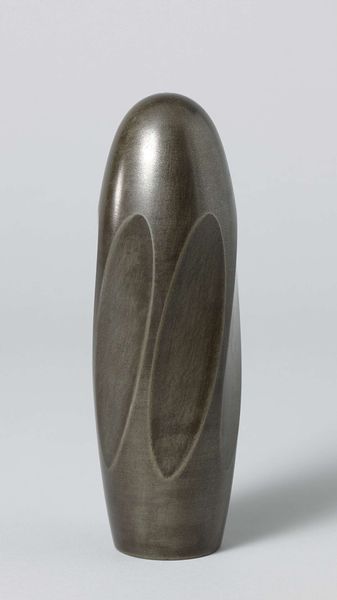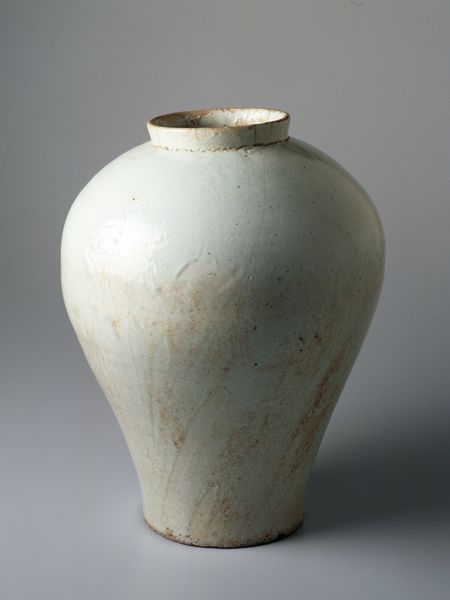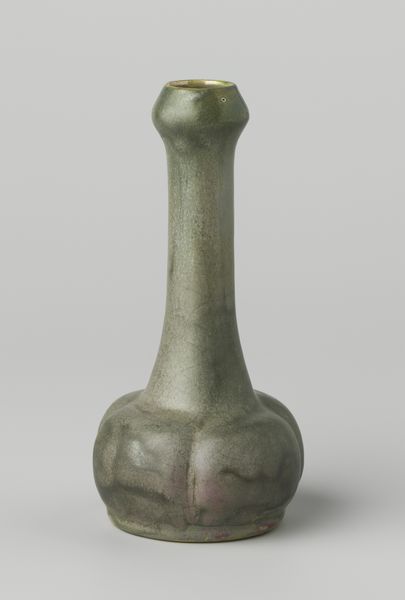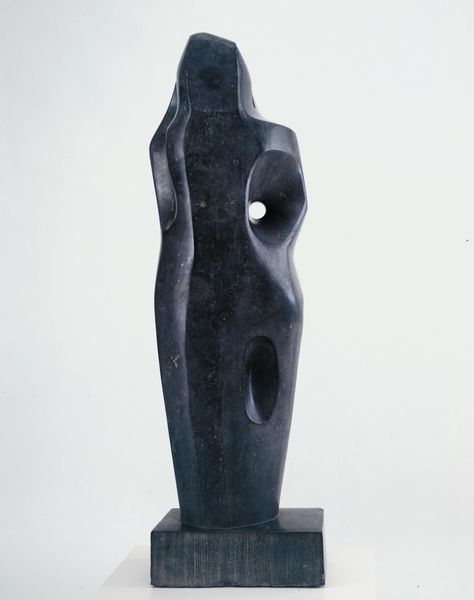
Dimensions: object: 1663 x 435 x 492 mm, 55 kg
Copyright: © William Turnbull. All Rights Reserved, DACS 2014 | CC-BY-NC-ND 4.0 DEED, Photo: Tate
Curator: Standing before us is "Idol 4" by William Turnbull, a striking sculpture in the Tate collection. Editor: It has an imposing, almost primitive feel. The elongated form and the muted green color give it a sense of timelessness. Curator: Turnbull's interest in ancient forms, particularly Cycladic figures and tribal art, is evident here. The post-war context saw many artists seeking universal, archetypal forms. Editor: The title, "Idol," points to that interest in the primal and spiritual. I wonder about the politics of display, though. How do we avoid exoticizing or appropriating those cultural references? Curator: That's a critical question. The sculpture’s scale demands attention, forcing the viewer to confront its otherness. Editor: It’s a fascinating object, one that encourages us to think about art's relationship to history and culture. Curator: Indeed, a work that speaks volumes about the artist’s time and continues to provoke dialogue today.
Comments
Join the conversation
Join millions of artists and users on Artera today and experience the ultimate creative platform.
tate 6 months ago
⋮
Like 'Idol 2', also in the Tate's collection, this is one of a series of Idols made in the later half of the 1950s, when the artist was refining and streamlining images based on the human silhouette. Unlike 'Idol 2', where vestigal nose and breasts remain to identify the figure, in this work the features have been incised into the surface while the contours of the sculpture remain smooth and minimal. The simplified form suggests sculpture from a much earlier period, perhaps an object of veneration from an ancient civilization. Gallery label, August 2004
